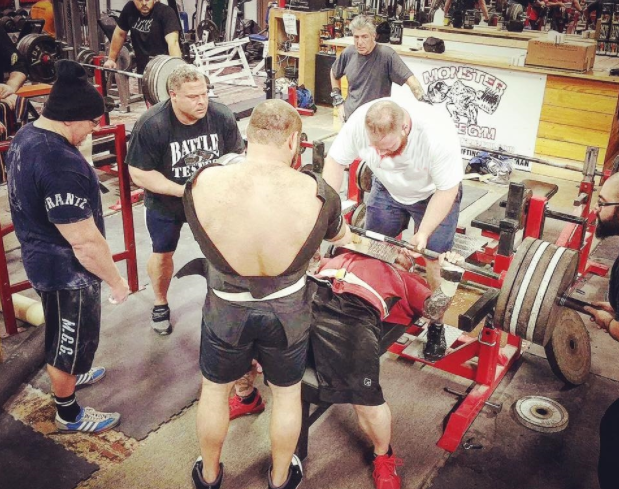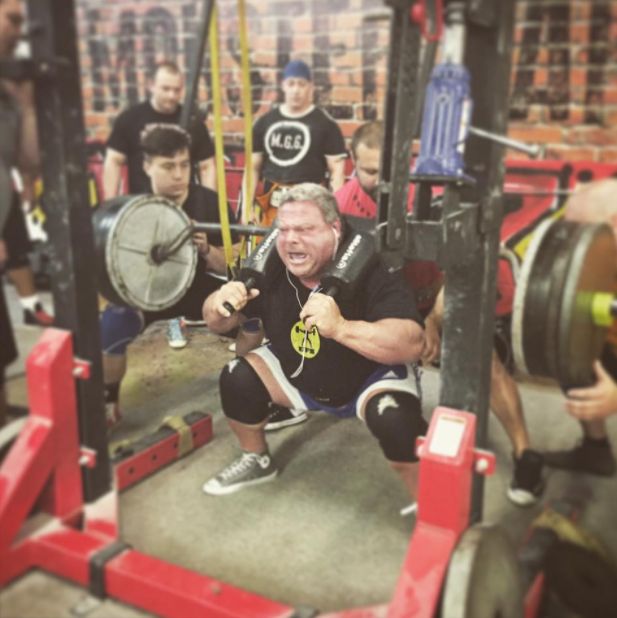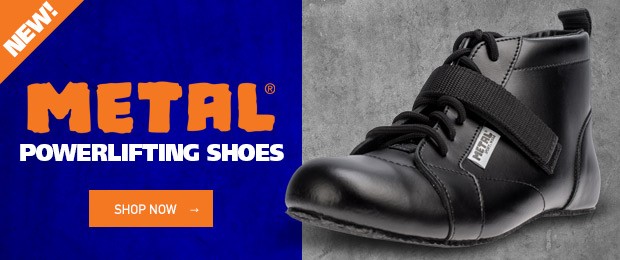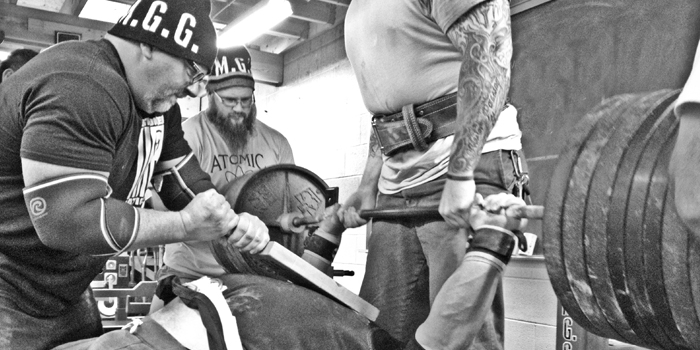
This is a multi-part series on perspectives for the beginner and intermediate powerlifter to consider as they make their initial step in this journey we call powerlifting.
One’s perspective grows as their breadth of experiences deepens. In part one, we discussed at length the rationale behind perspective. Based upon that rationale, we have now shared the first ten, of many, perspectives for the beginner and intermediate powerlifter to consider. The first ten perspectives are:
- There are no secrets.
- Sometimes the loudest guy at your gym is only that: the loudest guy.
- "All you can eat" is a fallacy.
- There is only one best way.
- Great lifters are not always great teachers.
- Meet day should be the easy day.
- The longer you are in the gym, the better. Right?
- Do what the biggest guy in the gym does. Right?
- If you didn’t do it in training, don’t try it during the meet.
- If you are not going for all-out numbers, why compete? Yes or no?
You can read their full descriptions in parts one and two of the series. Let's move onto five more things you should know as a new powerlifter.
11. Will wearing gear help or hurt my lifts?
Yes. As with all aspects of life, things have ebb and flow to them. There is always a pendulum effect as things change, and in our sport of powerlifting this is also true. The biggest impact on the sport of recent is the shift in the percentage of lifters who are raw vs. geared. Currently, as we stand in 2017, 90% of the sport is raw. I can recall competing in meets in the early and mid-1990s when the meets had two platforms going at once and all the lifters were in canvas squat suits, that era’s squat shoes, and denim or canvas bench press shirts (which blew out frequently). Regardless of the era and regardless of the percentage of geared vs. raw, over the decades, my perspective of decades in the sport has allowed for me to see the same occurrence and mistake over and again. That occurrence is new-to-the-sport lifters putting the cart before the horse — or in this case, gear before technique and a foundation of strength.
PART 1: The Gift of Perspective: Things to Know as a New Powerlifter
As we teach a tremendous amount of new lifters at the Monster Garage Gym, they often inquire if lifting in gear will help or hurt their lifts and the answer, the perspective-based answer, is yes. I say that not to be coy; I say that so I can give them the full answer, which is that wearing gear can absolutely help a lifter put up bigger numbers, but that lifter must first have some foundation of strength, must have worked to possess outstanding technique, and must have built up their tendon, ligament, and joint strength and durability over a stretch of time. The statement, as true as it is, simply will not register if the lifter has never trained in gear, as they have no context for it in the first place.
To the new lifter, this makes no sense, as there is no reference point. The lifter has also not been training with weight long enough to have developed a foundation of strength, technique, nor connective tissue durability. The question I downshift to is this: Can you go faster on, a one-cylinder Yamaha Classic motor scooter, or the MTT Turbine Y2K Superbike that tops out at 266 miles per hour and has 425 foot-pounds of torque? The obvious answer is the superbike. Having said that, the rider who can handle the 320 horsepower of the superbike didn’t start off on this 320-horsepower superbike. So, take a person who has never ridden a bike, put them on the superbike, tell them how to make it go and to accelerate, and sure enough, they will rocket themselves right into a wall and it will be game-over.
Point being, in gear you can lift more if you already have a really, really solid foundation in the three lifts because any weakness you have and any technical flaw that you have in a lift can and absolutely will be exposed, magnified, and amplified exponentially with the gear.
Bottom line is that if you are new to the sport, learn your technique, practice your technique, master your technique, and let your body grow stronger and more powerful before considering gear. Through my lens of perspective, this is a mistake I have seen more times than I can count. Sometimes a newer lifter is so new and inexperienced that they don’t know enough to even be able to formulate the questions. Throwing those lifters into gear, or even those with a little time “under the bar,” is history repeating itself over and over and over again, and ultimately doing the newbie a huge disservice in the long run.
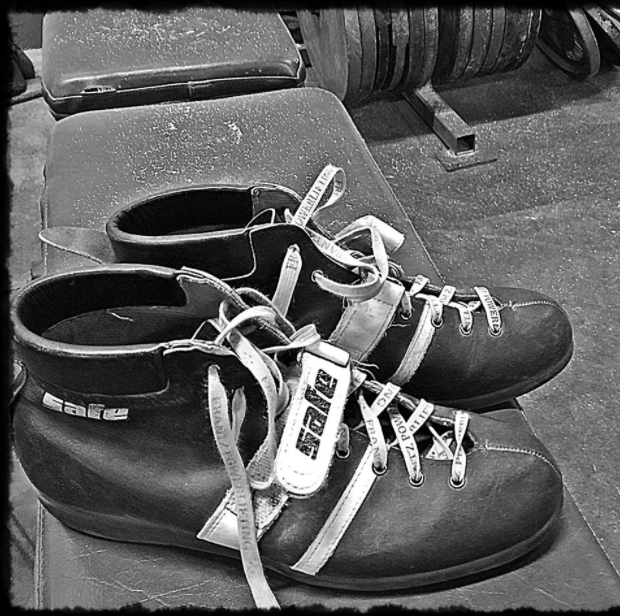
12. Don't make the “heights” of your meet a guessing game.
If there was a top five list of things I have seen over the decades in the sport, this one would be on that short list.
It is meet day and the lifters are at the monolift or squat rack, prior to the start of the meet, and they are all GUESSING the height the rack should be for their squat attempts. Meticulous training for 16 weeks has occurred, and right before the lifters go to warm up, they GUESS at the squat height for the attempts. This blows my mind, and I have seen this at literally every single meet I have been at or competed in. I am talking about several meets per year over decades since my first meet in 1989, and I have seen this at literally every full power meet.
So to get this perspective-based info to you, I am going to quote myself from another article I wrote about this trap that I so very much want you to avoid. Here it goes.
Picture in your mind’s eye the following: It is 30 minutes prior to the meet, and the monolift is all set up and ready to go. There is a line, a long line, of lifters starting in the warm-up area and snaking around the lifting area to end at the monolift. In this line are powerlifters, just standing and waiting. They are standing in this seemingly motionless line so that they can go up to the monolift and try to figure out what rack height they need for their squats. (They do this because each lifter has to report his rack height/monolift height to the head table so that during the meet, the bar will be loaded with the correct weight at the correct height for that powerlifter).
Note for non-monolift users: much like there are pin holes in squat racks, there are also pin holes on the monolift. And just like different squat racks, monolifts are all a little different, and what is pin 13 on one monolift might be pin 17 on another. At Monster Garage Gym, we have three elitefts monolifts. They were purchased a couple of years apart. Consequently, since Dave is constantly tweaking and improving designs, my pin height on our original monolift is hole 10, but I use hole 15 on the newer monolift, and 13 on the newest.
Are you with me so far? Because what is coming next is what I want you to hone in on. Regardless of which monolift I use at the Monster Garage Gym, be it the original monolift using hole number 10 or the other two monolifts, the distance from the floor to the bottom of the squat bar (which is laying on the monolift arm hooks) on both monolifts is always 52 inches. Can you see it yet? Let me state this another way: know from the years I competed that with 800 pounds loaded onto the bar—while wearing my squat suit, briefs, and knee wraps, and standing in my full semi-wide power stance—the distance from the floor up to the bottom of the barbell is a distance of 52 inches. At 52 inches, the bar is in the perfect place for me to stand up with the bar, squat the weight, and then re-rack it.
Let’s go back to this meet in your mind’s eye for a minute. I can wait forever in a long line, and when I get up to the bar and monolift, I can try to simulate where I think my stance is while dressed in my sweats and under an empty bar. Or I can walk up to that monolift, pull out my tape measure, have 52 inches of metal tape showing, bring the bar to that level of the tape, and glance over at the pinhole. Done! I am off to warm up while the masses are in line for another 30 minutes. Even after their long 30 minutes, all they end up with is a best guess of where the bar should actually go. In other words, a mere approximation of that perfect bar setting that they have used so successfully at their gym for so very long.
Here are some specifics: When you measure your bar height, do it during a training session with your competition weight on the bar, and while also wearing what you are going to wear during the meet. Here is why: For one, the gear makes you stand wider. The more gear and the wider the stance, the lower you are going to need the bar height to be. Furthermore, if you have a good amount of weight on the bar, the bar bends some. You want to make sure that when you are standing with a loaded bar on your back in your squat stance, the monolift hooks can clear under the bar once you have stood up in preparation to squat.
I am sure that you have seen this at meets yourself: the lifter stands and either the hooks can’t get out from under the bar and they have to raise the monolift height, or once the lifters squats and comes back up, the hooks cannot get back under the bar. Remember, with big weights the bar bends and your spine gets compressed. So, a half an inch of vertebral pads getting squished and two inches of bar bend can make it so the hooks on the monolift's arms can’t get under a bar. And that is when bad things happen.
The point I am illustrating for your benefit is this: You have readied yourself for this meet by making copious plans in regard to your training poundage, made sure you are making weight, and if you are equipped, making sure your gear is perfectly fitted. So why take a chance on guessing the proper height of the barbell? That position, the perfect barbell position, is the launching point and landing point for your competition squat. The squat sets the tone for the meet. You might be nervous and you might have warmed up too much or not enough. So have control over this variable. This crucial variable is important.
If you are a USAPL lifter and a monolift is not being used for the squat, this is still a must-practice since the bar does bend — even more so, as the USAPL does not use the 55-pound bars, causing somewhat more bend and whip. Also, there is the whole back compression that will occur in every lifter when the weight gets up there in poundage. And if nothing else, you are saving yourself 30 minutes of standing in line, as you will always have to give your squat rack height to the head table prior to when the squats begin.
We think of football as a game of inches and powerlifting as a game of pounds, but for a powerlifter attempting max effort weight with the squat, you want everything to be as perfect as it is in the gym. Having the inches from floor to barbell at the meet exactly as it is at your home gym can be the difference between making the weight and not making the weight. It can even be the difference between making the weight and getting injured, and nobody wants that.
Here is what I want you to do: Go into your garage and dig out that old, rusty metal tape measure and put it in your gym bag the moment you get done reading this. On your next squat day, I want you to go through this exercise and document the inches between floor and the bottom of the barbell sitting in your squat rack after your last squat set. Do that, write that number down, take that number to your next competition, and never again will you have to guess at something as important as your squat height. Your days of waiting in line to take a guess at your bar height are in the past.
Can one hole up or down on the rack really make a difference? When you are at 100% max squat with a personal record on the line, you can bet the bank it matters. And nothing is more costly than regret.
13. Put the phone down!
In the history of students attending high school, this particular generation of students currently in high school is unique in many ways, but one way is that they have never known a life without smartphones nor without social media. For many of them, the differentiation between actual authentic life and the postings of social media and pseudo-life are blurred. In some cases, it is indistinguishable to members of this generation.
With that said, this phenomenon, unfortunately, reaches all ages and has found its way into the ultimate Fortress of Solitude: the gym. This multi-part series is on the gift of perspective and as an eight-track guy living in a download world, my perspective contains decades of gym time, most of which was in a powerlifting environment and during a span of time without the distraction of the outside world. The gym is that place where one can leave their job, their worries, struggles, concerns, problems, and all extrinsic factors outside of the walls of the gym. Where a lifter can spend that hour or two inside the world-insulating walls, where the lifter can be a little selfish and focus on their power, strength, health, meet prep, training, and all the things that equal bigger numbers, victories on the platform, and a list of successfully crossed-off lifting goals. Where they can focus on a growing number of personal accomplishments in this amazing sport.
Our days outside of the gym are packed to the gills with issues, and this time in the gym is the lifter's very limited and precious time. What is astounding is that this small percentage of one's day is now being infiltrated by the very external forces that were once left outside the confines of the training facility. The vehicle that is helping these often-negative forces permeate the sacred ground of the gym is the smartphone. More troubling is that it is the lifters themselves that are literally allowing this to happen. They are literally contaminating their own training while in the most sacred of places: the gym.
Having known the gym before this device and now with it, my words to heed for the newer lifter is that there is a mind-body connection that occurs when one writes their lifts down on paper with pen. One cannot only successfully argue training is better without using apps to log the training, but they can also argue this with an ever-mounting pile of hard research data to back that statement. Beyond the logging of sets and reps through an app is the bombardment of the social media and the artificial world into the lifter's mind. This happens in the gym when the mind should be focused on the goal at hand: training for strength.
PART 2: The Gift of Perspective: Five More Things to Know as a New Powerlifter
No matter the level of the lifter, new to elite to all-time greats, the scientific data shows that injecting the smartphone into the focused training environment equals an outcome of far diminished returns on the physical investment.
If you have read this far, clearly you are looking for something to make your lifting better. In light of that, here is what I am saying:When you pull up to the gym, stow that phone in your gym bag, or better yet keep it in the car. The average person checks their phone five times per hour. Trust me, if you are in the weight room, unless you are the surgeon on call, you have a very sick person you are caring for, or have a wife expecting a baby, there is probably no reason on earth a person has to check their phone at all in the gym.
The world has enough sheep, enough lemmings, enough followers, enough mindless-”likers” of posts, enough cat memes, and enough photos of meal prep. Live in the real world. Go to the gym, shut out the outside world, and concentrate on your lifting goals. Aside from some serious life necessity to check the phone as I mentioned above, if a lifter can’t tune into their body and training, unfettered by a smartphone for the duration of a workout, it is a pretty safe bet they are not aware of the science behind how it limits the fight or flight response needed in the gym, as well as the other neurological mechanics involved with this piece of technology. Start it today — put the phone down!
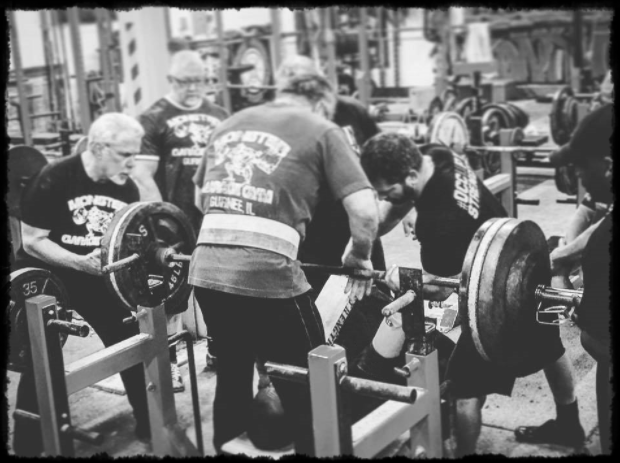
14. Develop meet sophistication.
My perspective on meets goals is a little different than the perspective of new lifters. Newer lifters have their own goals and those are without doubt important. With that in mind, the goal I also have in mind for them is simply the meet itself. In the world of competition, there is meet sophistication. You see this in the world of academia. Students take the ACT test, take it again, take it again, and take it again. The score typically goes up a point or two. The reason is definitely not because they have suddenly become smarter, but because they have learned about the test, how to pace the answers, when to guess when they don’t know an answer, how to best eliminate answers to increase their chance of landing on the correct answer of the remaining they have not eliminated, etc.
Meet sophistication is the same as test sophistication in that you learn how to compete. My point is, sometimes the goal of the meet is just to compete in a meet. Learn the ins and outs of the meet so when your numbers are big enough to compete at the more important and prestigious meets, you have enough meet sophistication and know how to avoid mistakes and let the lifting speak for itself, without being compromised by the mistakes that can come from being a newbie. Compete often as a newer lifter and hone your skills.
Meet goals are great but know the bigger inner-workings of the meet (timing the warm-ups, picking the proper attempts, knowing what and when and how much to eat and drink during the meet, etc.). The perspective being, do not fall into the trap of setting huge lofty goals for your first five to 10 meets, but rather have the goal be to learn how to compete so that when you actually have competitive numbers, you can let them speak for themselves at the meet, without having meet mistakes negate them, and thus lose to a weaker lifter who possessed more meet sophistication. Having all the strength and power in the world does a lifter no good if they can’t demonstrate that at the meet.
Stay tuned for part four in this series.










